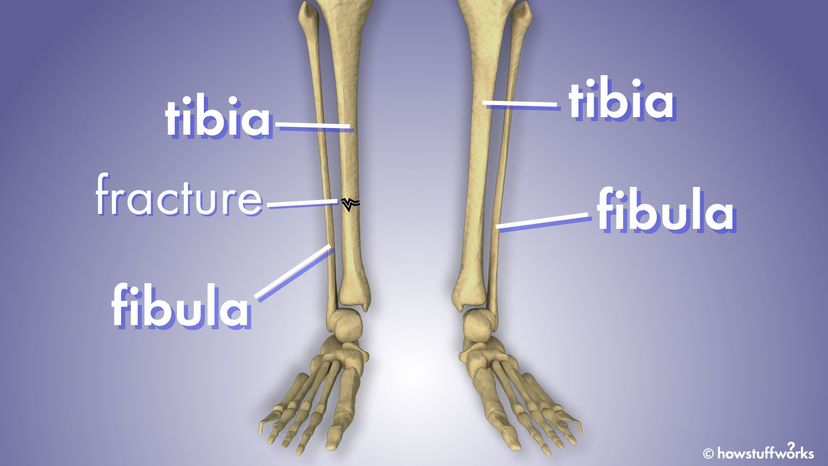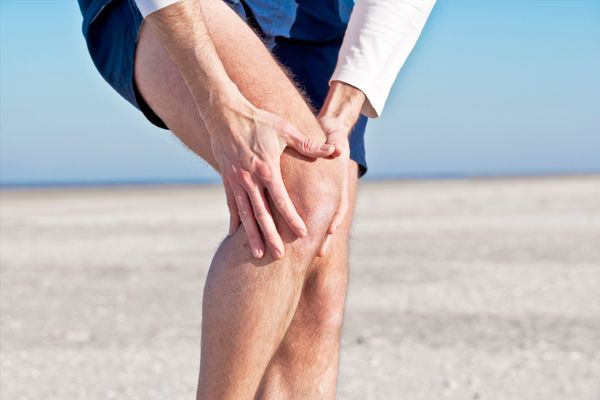When you touch your shin that bone is the tibia. It's thicker and longer than the fibula, and it's in front. It mostly looks like what you think of when you think of bones, with a head at either end and a long, smooth shank in the middle.
The tibia does most of the work by taking your weight as you stand and walk. It connects to your knee at the top and your ankle at the bottom. Of all your body's long bones, the tibia is the one you're most likely to fracture or break. But because it usually takes some serious impact to break the shin bone, the fibula is fractured 75 to 85 percent of the time you break the tibia. Ouch!
The fibula is more slender and slightly curved. It's on the outside of the tibia, so on the left side of your left tibia and the right side of your right tibia. You can't feel the fibula like you can the tibia since it's smaller and tucked behind a lot more muscle tissue. Its head tucks in under the tibia's head near the knee and then rests against the tibia at the bottom near the ankle in a little notch.
The fibula doesn't so much hold you up; instead it holds everything in your lower leg and ankle together. It supports the tibia and stabilizes the ankle. It also provides a place for muscles to attach. There's also a membrane that connects the two bones along their length.


